Skip to content
When you think of luxury homes, what comes to your mind?
Tomson first grade? Chinese yard? Suzhou Peach Blossom Spring? …
In fact, the best “luxury homes” in China are not located in the prosperous Beijing, Shanghai, Guangzhou and Shenzhen, but in Jinzhong City, Shanxi.
China’s largest private mansion
How luxurious is this mansion?
First of all, it wins in terms of area.
The total area of this “mansion” reaches 250,000 square meters.
Looking over here from the air, you will find that the houses in the courtyard are densely packed and very orderly surrounded by city walls.
The buildings in the compound are very unique, the courtyard is spectacular, and the terrain of the entire compound is uphill, which is very grand.
Therefore it also has many titles:
“Folk Forbidden City”, “Shanxi Forbidden City”, “The First Chinese Residential House”…
This mysterious and spectacular “first mansion” is the Wang Family Courtyard.
Home is a courtyard, and the courtyard is half a city
Friends who like to travel should have heard this saying: The Wang family does not visit the hospital when they return.
Everyone who has been to the Wang Family Courtyard will sigh, “It’s really too big.”
If you don’t follow the tour guide or map, you will really get lost.
To give another example, everyone has watched “The Qiao Family Courtyard” starring Chen Jianbin and Jiang Qinqin.
When watching TV, many people want to own the same type of house.
After all, who wouldn’t envy the “mansion” with more than 300 houses and 20 courtyards?
However, in terms of area, the Qiao Family Courtyard is only one-tenth of the Wang Family Courtyard.
The Wang Family Courtyard was not built at once. It took hundreds of years and was a complex of buildings built by several generations.
It’s strange to say that in different eras and with different aesthetics, the compound doesn’t feel like a “mix and match” at all, but is exceptionally harmonious.
Five lanes and six forts and one commercial street are interconnected and the houses are connected, just like a huge art museum, which is amazing.
The compound is mainly represented by the Gaojiaya building complex and the Hongmenbao building complex. The two building complexes face each other from east to west and are connected by a bridge.
The Red Gate Fort was mainly the place where the royal family lived for generations.
Viewed from a high altitude, it is composed of four rows of courtyards, symmetrical from left to right, with the main lane in the middle and three horizontal lanes forming a regular “king”.
Gaojiaya was built by the two brothers of the Wang family, Wang Rucong and Wang Rucheng, during the heyday of the Wang family.
Currently, the Wang Family Courtyard has a total of 123 large and small courtyards and 1,118 houses open.
Although it is less than one-fifth of the total area, everyone can feel the wisdom of the ancients from these houses.
A priceless garden
Come to the Wang Family Courtyard and take a quick tour of the flowers, which can be completed in a few hours.
But if you appreciate it carefully brick by brick, it may take several months.
When you walk in here, everything from the layout of the courtyard to the carvings on the beams have special meanings.
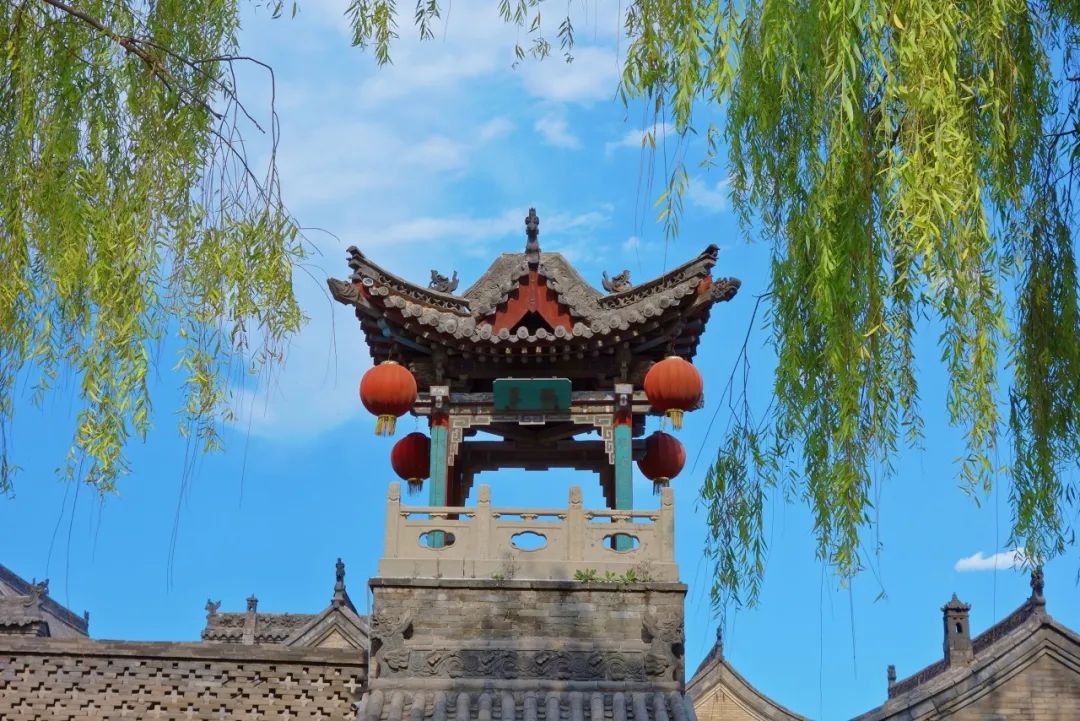
For example, the 17th generation grandson of the Wang family and two brothers of the Wang family lived before Gaojiaya.
Because the younger brother had a higher official position than the elder brother at that time.
And because of the difference between elder and younger, the younger brother’s gatehouse is not taller than the older brother’s, but the “threshold” is higher than the older brother’s.
Threshold: There is a saying in ancient times that the richer the family, the higher the threshold. This is a “high-class family”.

The most talked-about thing about the Wang Family Courtyard is the “three carvings” here, namely “brick carvings”, “wood carvings” and “stone carvings”, which can be collectively called the “Three Wonders of the Wang Family”. The carvings are rich in content and techniques. Change, the knife work is exquisite and lifelike.
If you look carefully, you will find that every door and every household has exquisite carved beams and painted columns.
These carvings are not drawn randomly, each place has a unique meaning.

For example, my brother lives in a house called Dunhou House. Starting from the decoration of the door, everything is very particular.
The door head is carved with a symmetrical pan-headed head and eight paintings arranged on four levels.
Each layer represents a different meaning:
The first layer is engraved with phoenixes and peonies, indicating that wealth is always there;
The second layer is folded and fan-shaped with carved scrolls and scrolls, implying elegance;
The third layer is carved with Eastern and Western gods, praying for long life;
On the fourth floor are Red Boy and Nezha, who guard the house and ward off evil spirits…
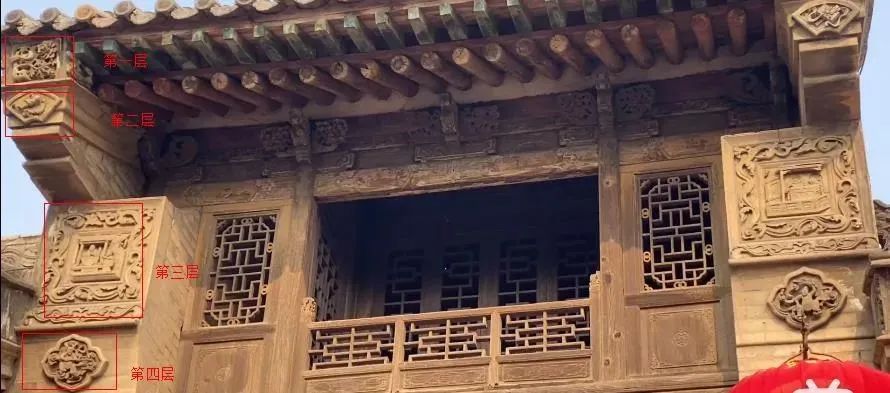
Even the hanging pillars at the bottom of the gatehouse are carved!
The hanging pillar in the middle is engraved with peonies, which represent wealth.
The hanging pillars on both sides are engraved with lotus flowers, which bear fruit before they bloom. Together they mean wealth and fertility.
At the same time, the lotus flower, also known as the lotus, represents wealth and integrity.
There are also persimmons carved on the bottom of some hanging pillars, which represent “everything goes well”.
Because the meaning is beautiful and exquisite, many wealthy people now come to the Wang Family Courtyard to find inspiration when building houses.
Among the numerous carvings, there is a “stone pier” that seems not so inconspicuous.
But if you look carefully, the pattern of the foundation stone can be divided into six layers, each with its own unique meaning.
The first layer is the drum surface. Traditional Chinese concepts believe that the drum is like the sky, the bell is like the earth, and the sky is round and the earth is round. Therefore, the drum is often used as the top beginning of the craft.
The second floor is engraved with brocade, which means that the future generations of this family have a bright future.
The third layer is a bat spitting out auspicious clouds, which is homophonic to “blessings” and means good luck.
The fourth floor is engraved with Kui dragon, which plays a role in guarding the house and warding off evil spirits.
The fifth floor is the base of the tripod, which means a prosperous foundation.
The sixth layer uses a pattern as the base, which means continuous wealth.
It is really amazing that these six layers of design, with exquisite layers and exquisite carving techniques, can be integrated into one foundation stone.
It is said that decades ago, a stone sculpture collector was willing to exchange a Hongqi car for this stone pier, but the descendants of the Wang family refused.
You must know that a Hongqi car was worth more than a house back then…
▽Stone pillar base with auspicious cloud patterns
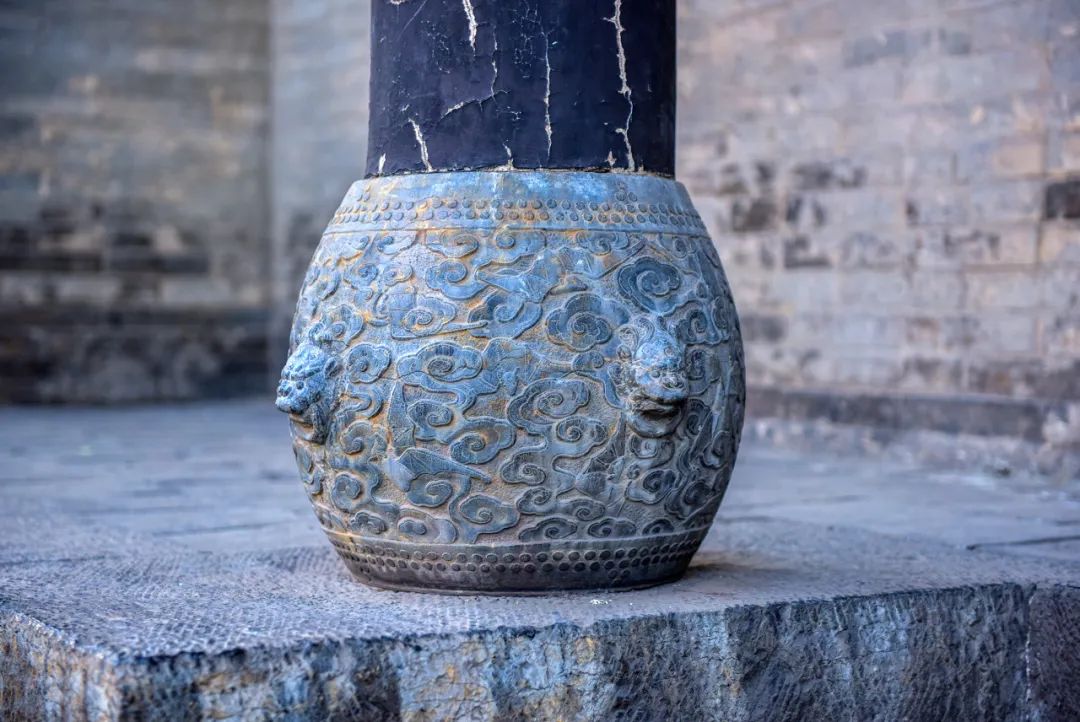
On the screen wall opposite the door is a lion rolling a hydrangea.
There is a saying that goes: When a lion rolls over a hydrangea, good things will come later.
Moreover, the lion is also the king of beasts and can ward off evil spirits.
When you walk through the door, you will see the screen wall that is often found in wealthy homes.
The carvings are of Jiangnan waterscapes, pavilions, platforms, buildings, pavilions… they are meticulous and exquisite.
And it is carved from caviar unique to Jiangnan.
This shows the elegant taste of the owner Wang.
In the Wang family, such good intentions are everywhere!
Even the sill stone in front of the door is very particular.
It is carved with a Jiangnan waterscape. The main pattern is a water bird cormorant, with lotus leaves and lotus flowers on both sides, which means “all the way together”.
The drain outlet is made in the shape of a “coin”, which means “water goes away and money stays”.
As you walk, you will sometimes see patterns with the word “swastika” carved out of bluestone on the ground. Coupled with “persimmons” on the four corners, it means “all goes well”.
See the tree planted in the lower left corner?
The tree is located in a square well, and is surrounded by grass beds to form a circle, which means “the sky is round and the earth is round”.
Walking in the courtyard, there are many door frames made of different styles.
The Calabash Gate, the Moon Cave Gate…these all also have meanings.
For example, the common gourd door symbolizes the realm of gods and auspiciousness.
In short, everything in the Wang Family Courtyard is filled with symbols and connotations of wealth, power, and status.
As the Wang Family Courtyard has become famous in recent years, many people have come to visit it.
To say that the most popular check-in place in the compound must be the “private school”.
Many parents want to touch the door frame of the “private school”!
When you see this, you must want to ask: What is there to touch in the door frame?
Because the door frame here is different!
The private school in the compound is where children study.
So in front of the door, a bamboo stone door frame was made from four pieces of bluestone: upper, lower, left and right.
The roots of bamboo are carved on the bottom, which means “the foundation must be laid firmly”.
The main part of the bamboo is also taller than each other, which means “rising higher and higher”.
It was ten years before I passed the examination and the magpie announced the good news, so the stone carving above had a magpie engraved on it.
Magpies are among pine branches and plum blossoms, which means that after occupying a high position, they must learn from their “high-spirited and upright” qualities.
Someone once praised: “The Wang family’s stones can sing.”
This sentence means that no matter where you stop, those stone carvings that are everywhere will lock your eyes.
Every stone here is a priceless treasure!
Regardless of the subject matter, the shapes are unique but not weird, the carvings are fine but not extravagant, the paintings are substantial but not vulgar, and the meanings are solemn but not overwhelming, which is amazing.
Now I finally understand why some people say: I can’t get enough of the Wang Family Courtyard in a few years!
Every brick and tile here, every plant and tree, is exquisite.
From the eaves, brackets to doors and windows, everything reveals the whimsical ideas and ingenious craftsmanship of ancient craftsmen.
Being in it feels like you are in a natural sculpture museum.
Therefore, if you want to turn this place around, it will take several years of hard work!
Started selling tofu
Seeing such a large Wang family compound, you must think that the people living here are either rich or noble.
In fact, such a large family property was accumulated bit by bit.
It can even be said to be “made from scratch”.
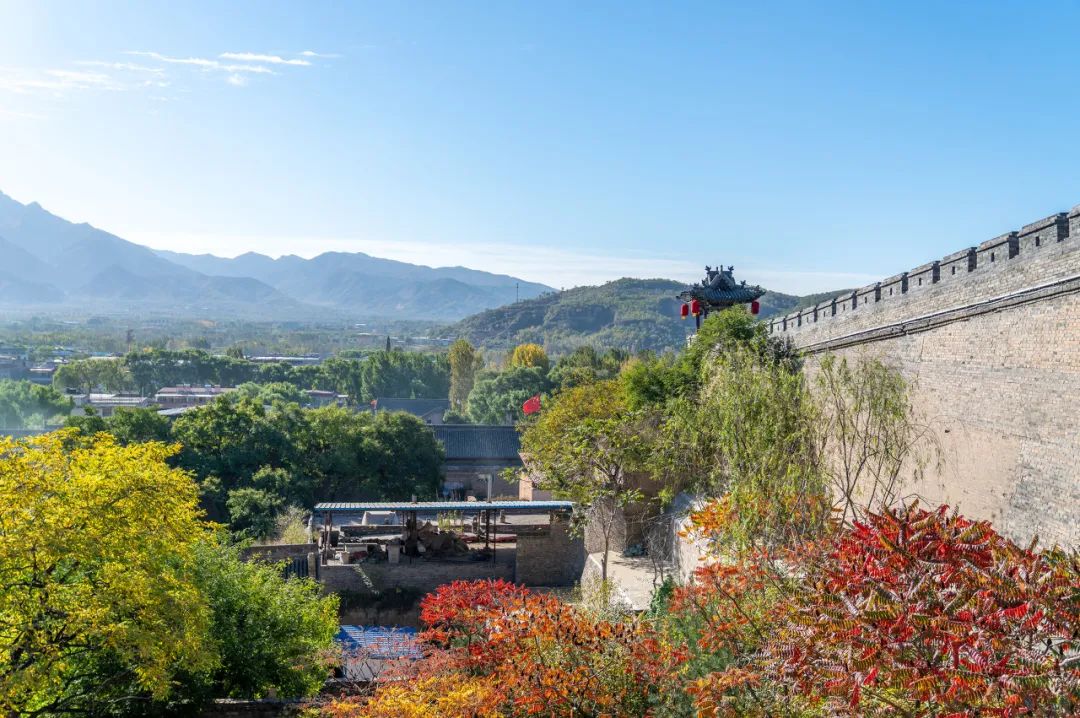
The Wang family are descendants of the Wang family in Taiyuan.
It is said that during the Huangqing period of the Yuan Dynasty, Wang Shi settled in Jingsheng.
While he was engaged in farming, he also sold tofu. Because he made tofu very well and had a kind and honest personality, he was very popular among everyone.
In this way, relying on the “tofu business”, the Wang family grew from farmers to businessmen, and from businessmen to officials. Their family business grew bigger, their wealth became richer, and their reputation grew higher and higher.
The heyday of the Wang family was during the Qianlong, Kangxi and Jiaqing years of the Qing Dynasty.
In addition to carrying out large-scale construction projects, building mansions and opening shops, they also run local charity schools and warehouses, build bridges and roads, store water and open canals, provide disaster relief and help the poor, etc., and continue to do good deeds.
Perhaps because of these benevolent deeds, during the heyday of the Wang family, there were only 12 people from the second to fifth ranks who entered the eunuch ranks.
It is a pity that the Wang family gradually declined after the 18th generation (during the Daoguang period of the Qing Dynasty), and finally no one lived in the compound.
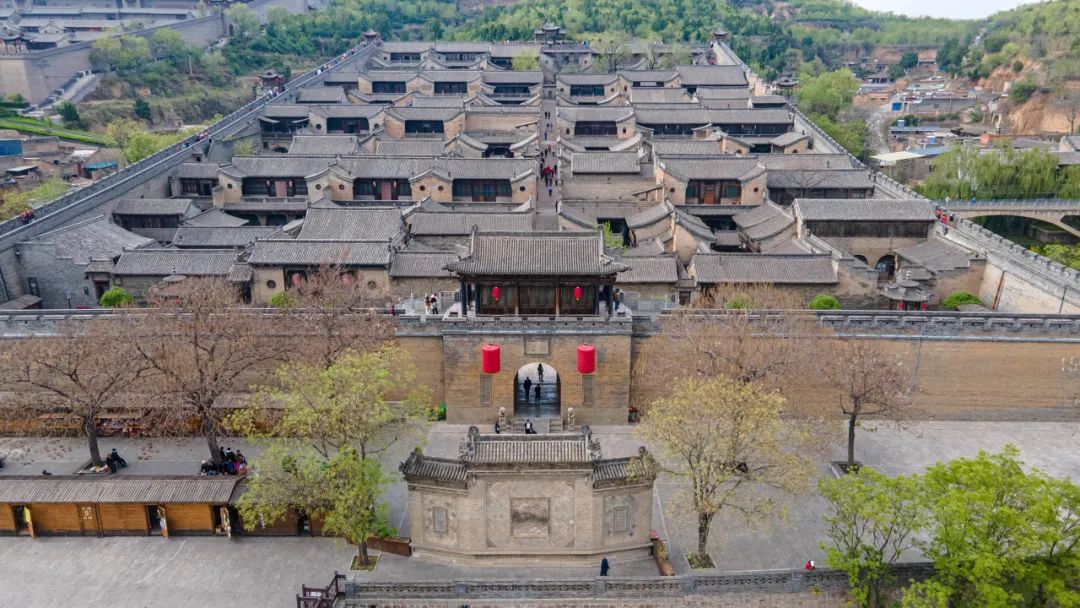
Although the ending of the Wang family is regrettable, the Wang family compound still left us with rich cultural wealth.
A door here can tell a story, a tile has the ups and downs of several generations, an alley contains the warriors of an era, and a courtyard has its own vicissitudes…
It feels like the flaming red lanterns will be hung high in the next second, and then burn up the passage of time all over the place.
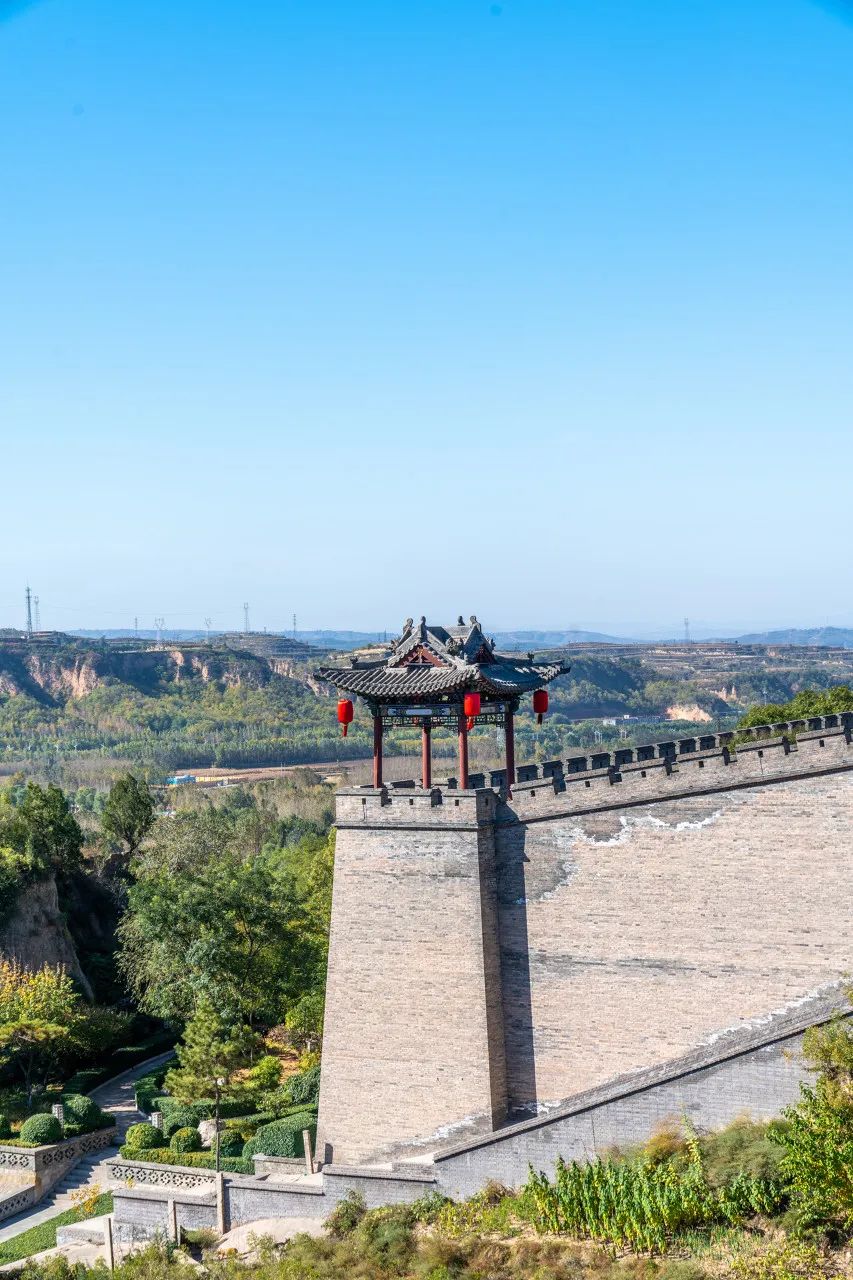
Recently, the four provinces of Shanxi (Henan, Shanxi, Hebei, and Shandong) have been making every effort to attract tourists.
Send diamonds, give pearls, shout wheat… In fact, I want to say that after visiting the four provinces of Shanhe, you will find that the splendid culture here cannot be replaced anywhere else.
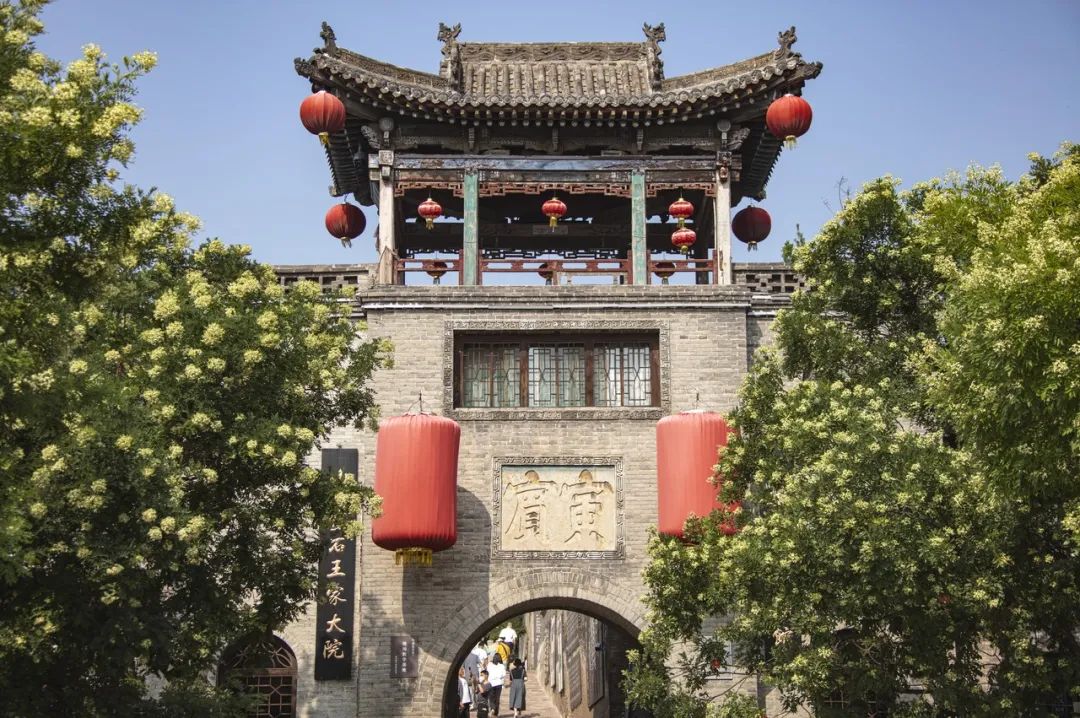
When mentioning Shanxi, the first thing that comes to mind is either coal or vinegar.
But at that time, Shanxi merchants galloped across Europe and Asia, taking the lead in finance. Their bank accounts were distributed all over the world. They dominated the world for more than 500 years and left a mark on the world.
And the wealthy mansions everywhere are the mark of their former prosperity.
The luxurious Qiao family, the magnificent Qu family, the spectacular Cao family, the exquisite Wang family…
Although the prosperity is no longer there, the romance is still on full display in the spring and autumn.
Therefore, if you have the opportunity, I hope you can come to Shanxi and visit the “Four Provinces of Mountains and Rivers”.
Here, the splendid culture has always been there, the famous mountains and rivers have always been there, and the food and monuments have always been there…































